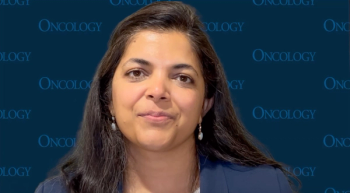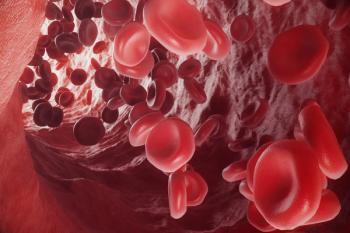
Oncology NEWS International
- Oncology NEWS International Vol 6 No 2
- Volume 6
- Issue 2
Milan Reports 18-Year Results of ABVD in Hodgkin's Disease
VIENNA--The first Hodgkin's disease study updates to come out of the Milan Cancer Institute since 1989 have now confirmed that the therapeutic advantages of regimens containing ABVD (Adriamycin, bleomycin, vinblastine, dacarbazine) are sustained for nearly two decades.
VIENNA--The first Hodgkin's disease study updates to come out of theMilan Cancer Institute since 1989 have now confirmed that the therapeuticadvantages of regimens containing ABVD (Adriamycin, bleomycin, vinblastine,dacarbazine) are sustained for nearly two decades.
"Compared to MOPP, the fraction of patients alive and in continuouscomplete remission following ABVD or MOPP/ABVD was significantly superior,"Dr. Valeria Bonfante reported at the 21st Congress of the European Societyfor Medical Oncology (ESMO).
Among patients with stage IIB or III Hodgkin's disease who had beenrandomized in the late 1970s to receive ABVD followed by radiotherapy andthen a second course of ABVD, 18-year freedom from progression was 77%and freedom from tumor mortality was 86%.
In contrast, only 60% of patients assigned to MOPP and radiotherapywere free from progression (P = .002), and 67% were free from tumor mortality(P = .002). The difference in overall survival at 18 years, while stillfavoring ABVD, no longer reached significance.
In patients with stage IV Hodgkin's disease, freedom from progressionafter 18 years was 61% for patients treated with alternating MOPP/ABVD,compared with 30% for those who received MOPP alone (P = .002). Freedomfrom tumor mortality was likewise higher among MOPP/ABVD-treated patientsthan among MOPP-treated subjects (77% versus 53%, P = .05).
Despite the failure of the overall survival difference to achieve statisticalsignificance, Dr. Bonfante said, "the results still confirmed thesuperiority of the alternating program versus MOPP alone."
The top cause of death was progressive Hodgkin's disease, trailed bysecond malignancy. The cumulative incidence of second malignancies was10% with MOPP-containing regimens and 14% with ABVD-containing regimens,with the relative risk greatest in older patients. The fact that secondmalignancies developed anywhere from 1 to 16 years after treatment underscoresthe need for continuous surveillance of survivors.
Articles in this issue
almost 29 years ago
NCI Launches Trial of High-Dose Chemo for Advanced Ovarian Canceralmost 29 years ago
'More May Be Less' in Metastatic Cervical Canceralmost 29 years ago
At 10 Years, DCIS Patients' Risk of Breast Cancer Death Is Very Lowalmost 29 years ago
Survey Finds 122 New Anti-HIV Medicines Currently Being Testedalmost 29 years ago
President Clinton Unveils National AIDS Policyalmost 29 years ago
Mammotomy May Reduce Biopsy Sampling ErrorsNewsletter
Stay up to date on recent advances in the multidisciplinary approach to cancer.
















































































